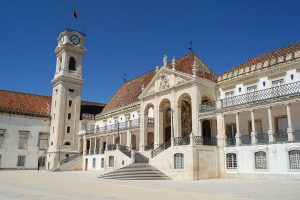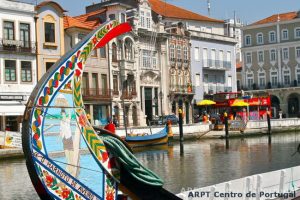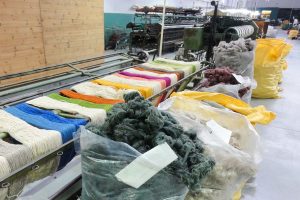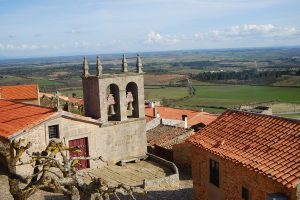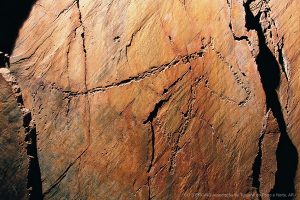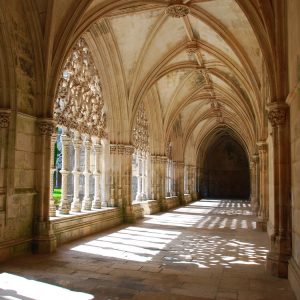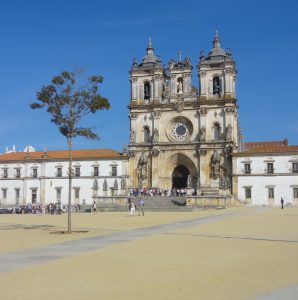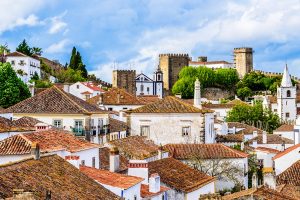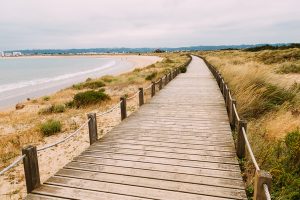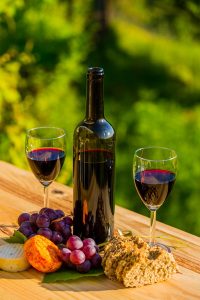
Discover the many charms of Las Beiras and Estremadura, together known as Centro de Portugal. There are so many things to see and do in the region we usually recommend at least 5/7 nights, whether on a short trip or as part of a broader tour around Portugal – click here for more details about our Portuquese itineraries. Here’s our guide covering all the Centro de Portugal…
Las Beiras
Stretching from the Atlantic coast to the border with Spain, from the Douro river at its northern border to the Tejo in the south and with Portugal’s highest mountain range, Serra da Estrela at its heart, the Beiras region is a land of full of exciting contrasts. In the east the historical fortress villages of the Planalto are witness to the formation of the country and centuries of frontier disputes, in the west the sophisticated Art-Nouveau Aveiro and brash resort of Figueira da Foz cater for all seaside tastes and at the region’s heart Coimbra with its elegant historic museum and unique Fado tradition offers a cultural experience second to none.
Beira Litoral
A region full of contrasts, at the coast the delightful, gentile, Art-Nouveau Aveiro, with its pretty gondolas, sits just minutes away from the roaring Atlantic with its awe-inspiring monster waves. A little way inland the vibrant, politically-charged city of Coimbra makes for a wonderful citybreak, with the country’s oldest University, its best preserved Roman remains and a Fado tradition of its very own. Further north the lovely granite-built city of Viseu, at the heart of the Dâo wine region, is a pleasure to explore with its delightful Cathedral and charming old-town.
Beira Alta
At the Centro region’s heart the Serra da Estrela mountains, Portugal’s highest, offer stunning glacial landscapes and a rugged paradise for walkers and nature lovers alike. Further east, at the frontier with Spain, lie the high plains of the Planalto dotted with historic fortress towns which offer a unique insight into the country’s history, its conflicts with the Spaniards and the Moors, and in particular its powerful Jewish Legacy.
Estremadura
Estremadura, at the south of the region is literally strewn with World Heritage sites. The monumental monasteries of Batalha, Alcobaça and Tomar sit within striking distance of the equally impressive Atlantic coast.
Table of Contents
Centro de Portugal Highlights – Las Beiras and Estremadura
Things to See and Do in Beira Litoral
- Coimbra
- Conímbriga
- Viseu
- Aveiro
- Figueira da Foz
- Dão wines – ‘Rota dos Vinhos do Dão’
- Sierra de Caramulo and the Carmulo Car Museum
Things to See and Do in Beira Alta
- Manteigas & Serra de Estrela
- Historical Villages – Fortress towns of the Planalto
- Côa Valley Rock Art
- Faia Brava Nature Reserve
- Visit to Douro International Nature Park
- Jewish Legacy
Things to See and Do in Estremadura
- The Monastery Towns
- Fátima
- Óbidos
- São Martinho do Porto
- Nazaré
- Parque Natural de las Sierras de Aire y Candeeiros
Practicalities – Frequently asked questions about things to see and do in Centro de Portugal
Things to See and Do in Beira Litoral
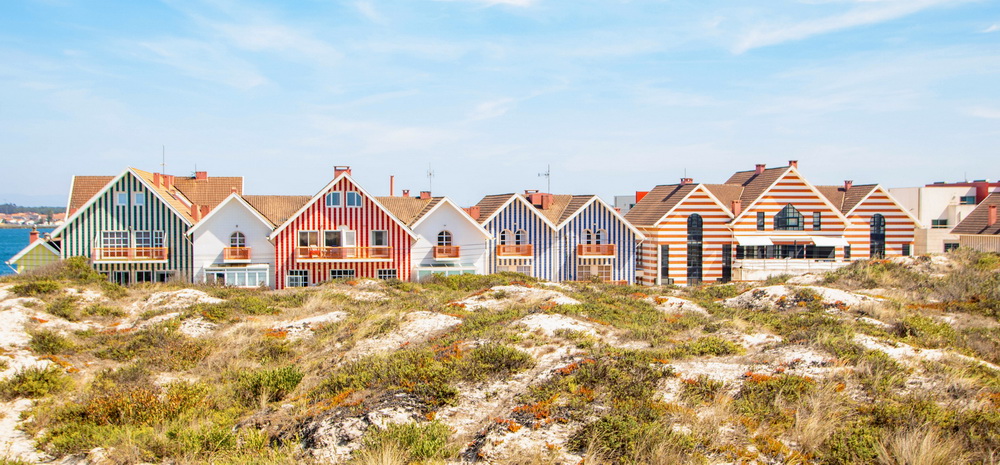
Coimbra
Home to Portugal’s most ancient, most important and certainly most monumental University which sits at the city’s highest point alongside the imposing Romanesque Cathedral with the Jewish Quarter just below, Coimbra, has an immensely rich history which is plain to see.
Originally founded by the Romans, Coimbra was then settled and developed by the Moors before having a stint as the nation’s capital in the 12th century. Each era has left its mark but nearly 500 years as Portugal’s leading university city is undoubtedly what gives Coimbra its unique character.
Museums galore, a Fado tradition peculiar to the city and walls covered with highly political graffiti are part of the legacy as much as the wonderful buildings, chapels and library of the university itself.
Start your visit at the Patio das Escolas ranged around which are the neoclassical buildings of the Old University and the imposing statue of João III and from where you can observe a simple wonderful panoramic view over the city. Nearby various museums are scattred among the university buidings most notably the Machado do Castro Museum – one of Portugal’s leading art galleries built over the Roman Forum and the Science museum which is set in an old monastery.
Stroll down the hill to the Sé Vella Cathedral, one of Portugal’s finest Romanesque churches and on into the Jewish Quarter, a warren of narrow lanes, especially magical by night.
No visit is complete without a fado show – Coimbra has its own distinct style sung only by men dating back to the 19th century when the students would serenade the local beauties. There are several shows and concerts but for a delightful setting A Capella, in an old chapel beside the Jewish Quarter, is highly recommendable and they offer dinner at a very reasonable price.
Over the river from the main town centre the historic palace of Quinta das Lágrimas, now a luxury hotel, is also well worth a visit. You can visit the extensive grounds which are home to a giant redwood planted by Wellington and the Lovers Fountain where Doña Ines met her untimely end.
Conímbriga
Just 20 minutes’ drive from Coimbra, Conímbriga, is one of the best preserved Roman sites in Portugal. First settled in pre-historic times and subsequently by the Celts, the site was occupied by the Romans troops in 139 BC later becoming the capital city of Roman Lusitania before being eventually abandoned for what is now the city of Coimbra.
Conímbriga grew during the reign of Emperor Augustus, from which time the forum, the amphitheatre and the thermal baths were built. Later basilica was built in the town’s centre.
The outstanding heritage and charm of Conimbriga however lies in the domestic arrangements of its insulae and lavish domus, developed and renovated especially between late 1st century and early 3rd century.
There is also a nice museum (closed on Mondays) housing the many artefacts discovered on the site and giving an insight into everyday life in the Roman city.
The ruins are open to the public every day.
Viseu

Nowadays the city is quite genteel and serves as the main centre for the Dão wine region – one of Portugal’s oldest and most important wine producing regions.
The city itself has a lovely Old Town with a magnificent Cathedral, Jewish Quarter, Roman walls and a museum dedicated to the 15th Century painter Grão Vasco (the Great Vasco) whilst at the same time being a wonderful base from which to explore the Centro region. Aveiro and the Atlantic, Lamego, Trancoso and the Serra da Estrela are all under an hour’s drive away and Coimbra is well within reach for a nice excursion.
Aveiro
An important university city and the second largest in Portugal’s Centro region, after Coimbra of course. Aveiro has a life of its own yet the historic centre is really quite small and easy to get along with.
Once an important port, the city fell into decline due to the silting up of the river mouth but was given a new lease of life in the early 1800s by the opening of the canal system, which nowadays contribute much of the unique charm of this city earning it the nickname ‘the Venice of Portugal’.
Further charms were added during the late 19th and early 20th century with the boom in Art Nouveau and Art Deco architecture which line the canals and the square of the old town. You can appreciate the art wandering around the streets and canals but there is a small museum should you wish to find out more.
No visit to Aveiro would be complete without a ride in a ‘Moliceiro’. These colourful, gondola-like boats, originally used for seaweed harvesting, are the best way to discover the canals, outer waterways and salt pans.
Right on the Atlantic coast Aveiro of course offers all the attractions of a traditional seaside holiday. The surfy beaches of Barra, Costa Nova do Prado, and Gafanha da Nazaré start just 10 minutes’ drive (or bus ride) away. You can sail or kayak in the safe waters of the estuary and you have plenty of options to enjoy the local fish and seafood – particularly around the Mercado do Peixe right in the old town.
Whilst in Aveiro don’t miss the local pastries and delicious sweets including the trademark ‘Ovos Moles’ and do try the the local Barraida wines – acidic and often sparkling, and interesting if little known Portuguese denomination.
Just up the coast the Vista Alegre ceramic Factory at Ilhavo is well worth a trip. Founded in the 19th century Vista Alegre is one of Portugal’s most famous porcelain producers and many of the artesan processes, including painting are still carried out by hand.
Figueira da Foz
Sun, sea and sand and a lively party atmosphere, Figueira da Foz, at the mouth of the Mondego River just 40km from Coimbra, is the largest seaside resort in Beira Litoral and owes its popularity to extensive ocean-facing beaches of soft white sand.
Discover a unique blend between a brash seaside resort, a real fishing port and the cosmopolitan air inherited from the Belle Époque when Figueira da Foz, with its famous casino, was the most visited in Portugal.
Dão wines – ‘Rota dos Vinhos do Dão’
The Dão region nestling between the Atlantic coast and the Serra da Estrela and made up of thousands of tiny plots produces elegant mineral reds and some little -known but surprisingly good whites. The plots are so small and hide between pine forests and behind walls so you might not feel you’re in wine country at all. Especially recommended are Bodega Casa Santar and Paco dos Cunhas de Santar.
Sierra de Caramulo and the Carmulo Car Museum
The granite mountains of the Caramulo range make an ideal get-away for some off-the-beaten track trekking. Climb to Caramulinho, the highest spot in the mountain. 1076 meters high, this is the ideal spot to fully enjoy this collection of mountains, their vegetation and small villages. The Serra is also famous for its waters with several small spa towns doted around.
The Caramulo Car Museum, founded in the 1950s by two brothers is divided into two buildings, one dedicated to art and the other to classic cars. The permanent exhibition includes a bicycle and tricycle collection, 30 motorbikes and 70 cars among which the oldest car still working in Portugal, an 1899 Peugeot.
Things to See and Do in Beira Alta
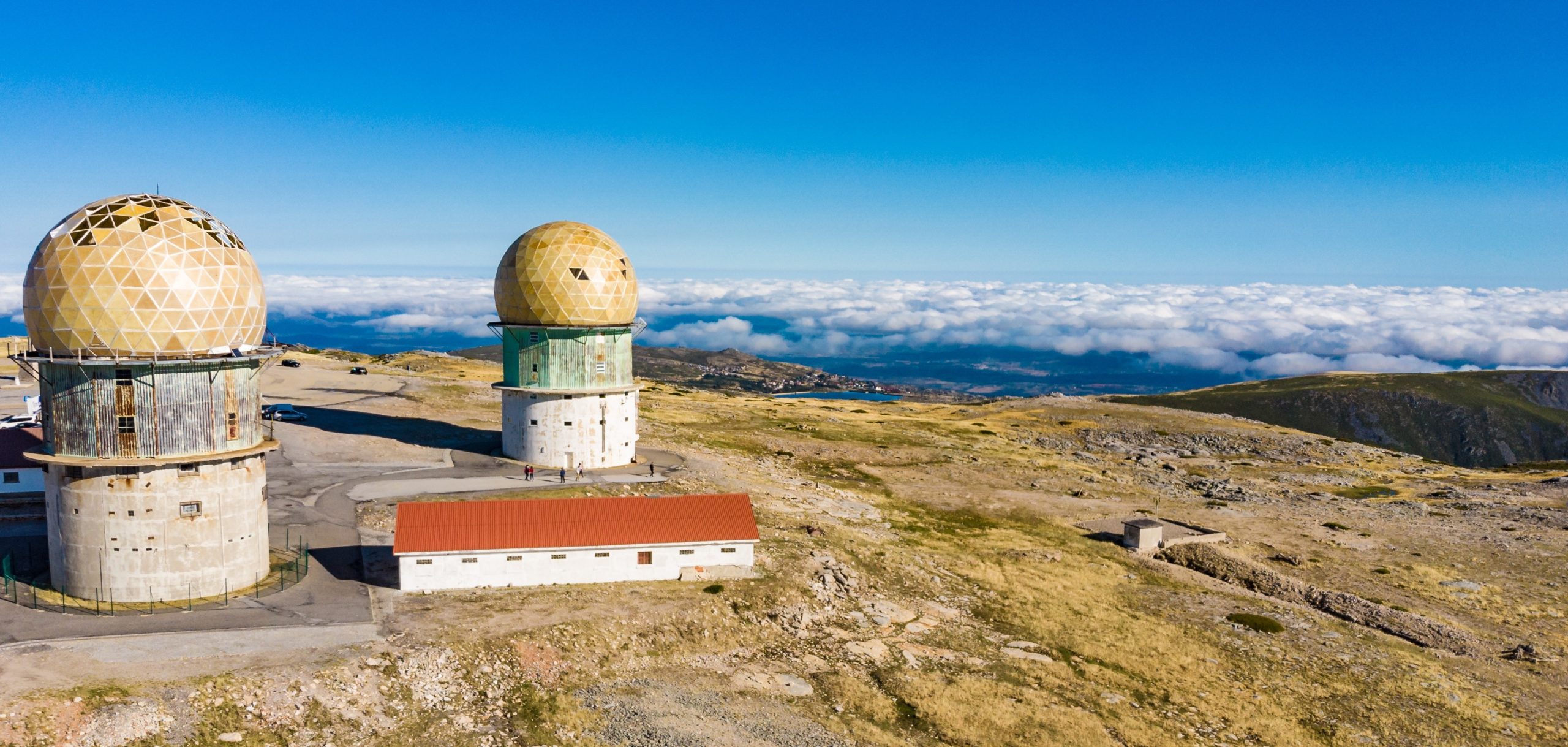
Manteigas & Serra de Estrela
The only town in the high mountains of the Serra da Estrela, Portugal’s highest range, Manteigas serves as a market town for the region and a centre for the local sheep farming and wool industries.
With glacial valleys and highlands strewn with immense granite boulders all around, Manteigas serves as the best centre for walking and mountain activities and nowadays it is a centre for tourism in the Serra.
From here you can dip into the glacial Vale do Zêzere or take in the stunning views from the Penhas Douradas peaks and there are a series of well-marked and documented ‘green trails’ or ‘Trilhos Verdes’ which make this the ideal base for visitors to get the most out of the area.
The Burel Wool Factory is a must for anyone spending time in Manteigas. Faced with closure, the factory has been rescued and now produces a wide range of products from blankets, scarves and hats to structural textiles and wall coverings, mostly using wool from the local mountain sheep. The machines date back to 100 to 150 years old and are a marvel to see in action.
Historical Villages – Fortress towns of the Planalto
Trancoso – a good place to start the 13th century walled town of Trancoso still has a lively market-town atmosphere and there’s a good tourist office just outside the main gate where you can park and pick up info about all the Historical Villages. There’s a well-preserved castle built by Dom Dinis which has an interesting Moorish tower.
Almeida – the ‘modern’ fortress town. The star-shaped fortress of Almeida, occupying a strategic position near the border crossing with Spain, was built in the 1640’s on the original medieval site after Portugal regained its independence from Spain.
Marialva – dominated by the 12th century castle and medieval ruins at the top of the hill the tiny village of Marialva feels like little has changed since medieval times. The tourist office is in the castle entrance itself.
Castelo Rodrigo – Castelo Rodrigo is a tiny walled village (50 inhabitants in winter) clustered around the castle of the same name. All the practical business of life now goes on in Figueira de Castelo Rodrigo, just down the road, which has left Castelo itself to remain wonderfully unspoilt. The castle was originally constructed by the Spanish in the 12th century but was reinforced and extended by the Portuguese in the 13th as they started to firmly establish their borders. Though small, the village has all you could need with a lovely local bar and a good tea-room, both of which have nice terraces to take advantage of those views.
Sernancelhe – surrounded by ancient chestnut forests to the north west Sernancelhe has a beautifully preserved old town with an interesting Jewish Quarter.
Belmonte – further south, at the foot of the Serra da Estrela, Belmonte is not to be missed. There’s a large, well preserved castle with outstanding views and a well preserved old town but what makes Belmonte stand out is its strong Jewish legacy. The whole area served as a refuge for Jews at the time of the Inquisition starting in the late 15th century and most of the Historical villages have a Jewish Quarter. What’s different in Belmonte is that even after the Inquisition reached this part of Portugal the local community carried on in secret – right up to the 1980’s! There’s a fascinating Jewish museum with artefacts from the local culture and a synagogue which can be visited.
Côa Valley Rock Art
Discover the amazing Paleolithic rock-art of the Côa Valley over 5000 petroglyphs some 22000 years old. Just south of the more famous Douro Valley the Vale do Coa is an area of great natural beauty but it’s also an active centre for archaeological research so to see the rock-art you must take a guided tour organised through the Visitor Centre – Museum in Vila Nova de Foz Coa. In summer months be sure to bring rugged comfortable shoes and a hat, sun lotion and water – it gets extremely hot in the valley!
Faia Brava Nature Reserve
Further south in the Vale do Côa, the nature park of Faia Brava is a wilderness teeming with wildlife, hosts the nesting sites and feeding grounds of one of the most important centres of rupicolous birds in the Vale do Côa Special Protection Zone.
The Transhumance and Nature Association (who own and manage the park) offer guided tours on which you can explore the slopes of the River Côa, the largest expanse of cork oaks in the region, the ancient houses and trails and a traditional pigeon loft, as well as birds of prey like the griffin, the golden eagle, the Bonelli’s eagle, the Egyptian vulture and the black stork.
Visit to Douro International Nature Park
On the border with Spain, along the national frontier formed by the river Douro, the park takes in the municipalities of Miranda do Douro, Mogadouro, Freixo de Espada à Cinta and Figueira de Castelo Rodrigo.
The spectacular, monumental valley walls and deep ravines play host to various bird species, many of which endangered, including the Egyptian vulture and Egyptian vulture.
The climate here varies dramatically, with harsh cold winters and dry hot summers and is particularly alluring in Autumn or during the months of February and March when the almond trees in blossom put on quite a show.
Jewish Legacy
During the foundation of Portugal, the Sephardi, or Iberian Peninsula Jews, helped populate the territory conquered from the Moors. For this reason they benefited from royal protection until 1496, the date of the Edict of Expulsion of the Jews. The businessmen, scientists, men of letters, philosophers, doctors and astronomers from those communities made great contributions to sea-faring and the Portuguese Discoveries, as well as to medicine and economics.
The Centro region, particularly Beira Alta was a refuge for the Jewish community and is the best place to get a feel of that powerful legacy. Take some time and visit the remains of the old neighbourhoods in which they lived. Street names and architectural features sometimes give clues to the style of Jewish houses, with two doors on the ground floor and the symbolic marks and inscriptions of those times can still be seen carved in the houses of former Jewish quarters, whose traces survive in places like Trancoso, Belmonte, Guarda and Castelo de Vide.
Things to See and Do in Estremadura
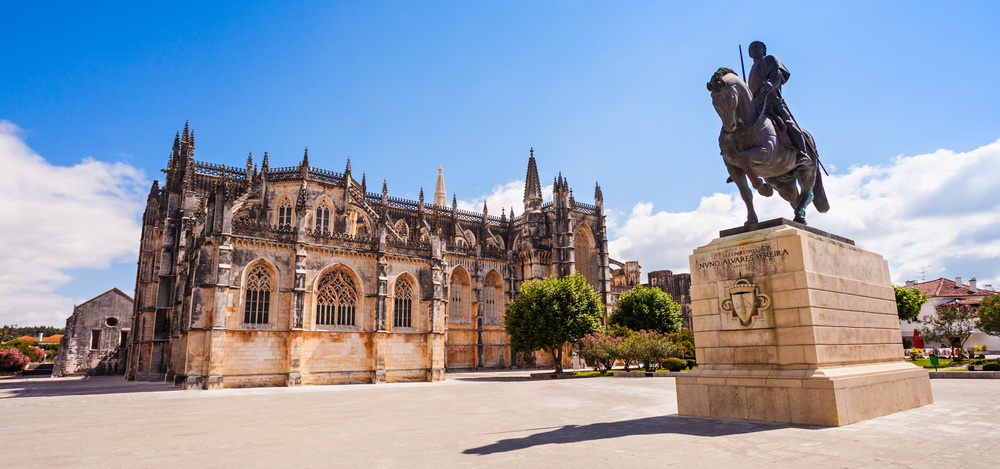
The Monastery Towns
Though it has much more to offer Estremadura stands out for the famous Monasteries of Batalha, Alcobaça and Tomar (this last one strictly speaking being a convent) all of which are UNESCO World Heritage sites. If you’re planning to visit all three you can get a multi-monastery ticket, valid for one week and available from any one of the three.
Batalha – If you visit Batalha you’re there for the monastery, Mosteiro de Santa María de Victória, Portugal’s second most visited monument.
Commissioned in 1385 after the battle of Aljubarrota where the Portuguese beat the Castilian forces in spite of being vastly outnumbered and housing the tombs of King João I (the founder), his son Henry ‘the Navigator’ and Dom Duarte, the monastery holds a very important place in Portuguese history and culture.
Batalha is also a perfect base to visit all of Estremadura’s other monuments especially the Convento de Cristo in Tomar and the monastery of Alcobaça. Medieval Óbidos is also within easy reach.
But a visit to Batalha needn’t be all about the ‘old stones’! The unique landscape of Parque Natural de las Sierras de Aire y Candeeiros is just nearby and the surf-washed Atlantic coast is just 20km away.
Alcobaça – Once again the monastery is the main attraction here. One of the finest and most impressive examples of Gothic Cistercian architecture in Europe the Mosteiro Santa María de Alcobaça was founded by Alfonso Henriques and dates from 1178 when it was built to commorate a decisive victory over the moors.
Based on the French abbey of Claraval the monastery buildings have a beautiful simplicity (unusual in a Portuguese church) with the exception of the Manueline sacristy portal which was added in the 16th century.
Aside the cathedral itself the other crowd-puller is the tomb of Dom Pedro and Inés de Castro. The tomb itself is exquisitely carved but it’s the legend of the star-crossed lovers – he the prince, she the humble Gallega lady in waiting, brutally killed on the orders of the king – which continues to fascinate generation after generation.
Alcobaça itself is charming little town set on a river and you’ll find plenty of cafés and restaurants on the square in front of the monastery and the streets leading off.
Tomar – Another town, another monastery, only this time it’s a convent, the Convento de Cristo, which dominates with its monumental mix of Manueline, Gothic and Renaissance architecture.
The town itself was founded by the Knights Templar in 1157 and makes for a pleasant visit with its riverside park and nicely pedestrianized city centre.
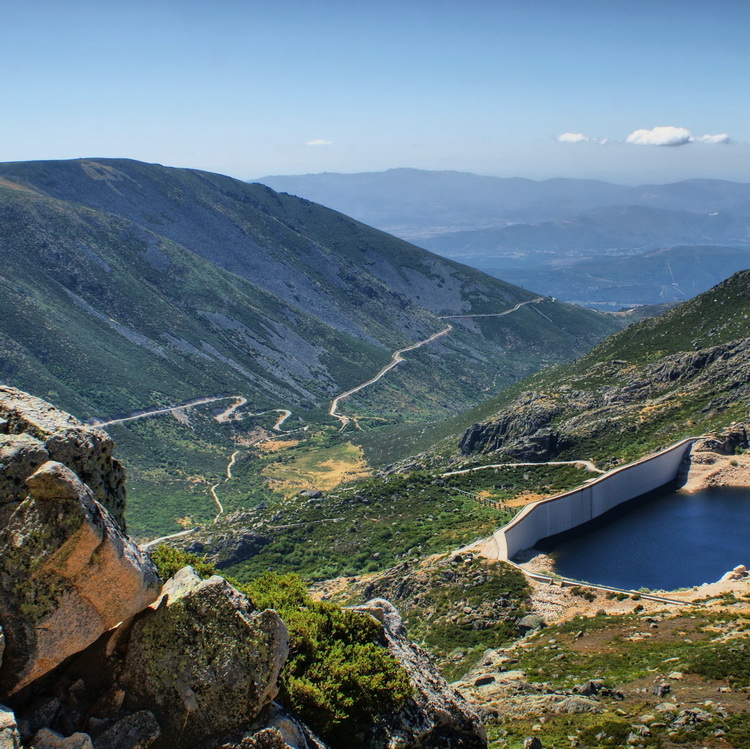
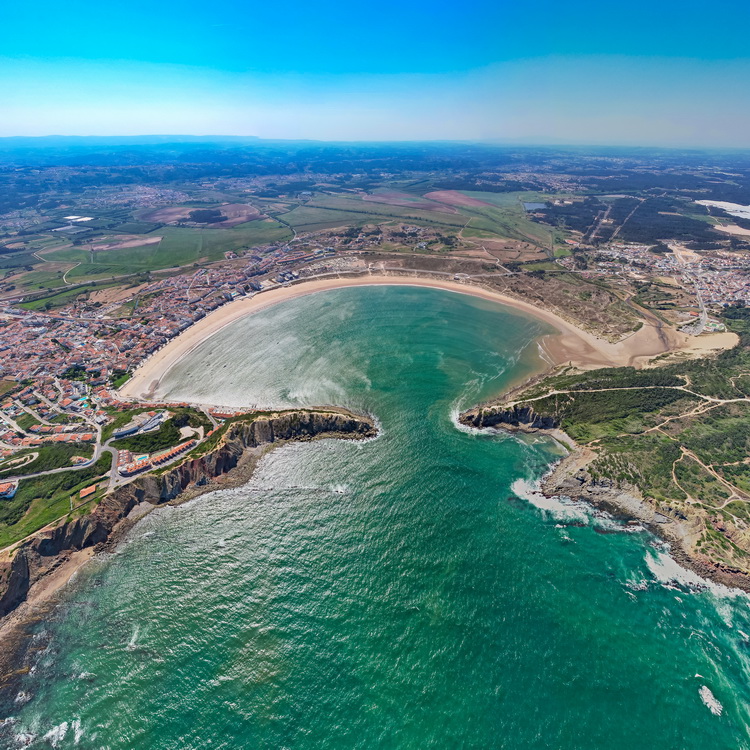
Fátima
A major pilgrimage centre attracting six million faithful every year, Fatima is certainly a curiosity and an insight into Portugal’s Catholic religious culture, but as the sighting of the Virgin Mary (the reason for the pilgrimage) occurred in 1917 the town doesn’t have the historic interest of the other heritage sites in Estremadura.
Óbidos
With a history going back to the Romans, who had a fort on the site, via the Visigoths and Moors to medieval times when, in 1228, Dom Dinis gave it as a gift to his wife Dona Isabel who had fallen in love with its charms, Óbidos remains equally charming to this day.
The town used to be on the sea but the bay has gradually silted over the centuries – the beaches are now 10km away.
Apart from its own obvious charms, Óbidos is a wonderful base to explore the great sites – the monasteries of Estremadura; Batalha, Alcobaça and Tomar; the Atlantic coast resorts of São Martinho do Porto and Nazaré and the Parque Natural de las Sierras de Aire y Candeeiros.
Although the town can be quite touristy, in the summer months especially, with coach parties visiting from Lisboa, this is really quite limited to the main street (and the middle of the day) and can be quite easily escaped with a little exploring.
São Martinho do Porto
At one time a provisions port and a stopping off point for the Kings of Portugal, the pleasant seaside town and fishing port of São Martinho do Porto, sits on a lovely shell shaped, sandy bay on the Silver Coast in central Portugal, about 100 kms north of Lisboa.
Though very busy and bustling in the summer months, it has a nice, laid back feel at other times of the year and it is so relaxing just to stroll along the front or the beach and watch the fishing boats and the locals collecting seaweed. From its lighthouse, you get a wonderful view of the coast and on a clear day, The Berlengas Islands where birds take priority over humans.
The town is well supplied with little shops and bars and restaurants, many of which serve fish and seafood as their specialities.
Not far away is the picturesque and dramatic cliff backed coastal resort of Nazaré and the monumental sights at Alcobaça, Batalha, Óbidos and Tomar, not to mention the lovely Sierras de Aire y Candeeiros for those who like walking.
Apart from its own obvious charms, Óbidos is a wonderful base to explore the great sites – the monasteries of Estremadura; Batalha, Alcobaça and Tomar; the Atlantic coast resorts of São Martinho do Porto and Nazaré and the Parque Natural de las Sierras de Aire y Candeeiros.
Although the town can be quite touristy, in the summer months especially, with coach parties visiting from Lisboa, this is really quite limited to the main street (and the middle of the day) and can be quite easily escaped with a little exploring.
Nazaré
Famous for its monster waves and home to the world surfing championships Nazaré, with its cobbled lanes running down to the cliff-backed beach, is one of Estremadura’s most attractive seaside towns.
To get an instant feel of the town – and a ‘wow’ photo to go home with – take the funicular from the end of the beach up to Promontorio do Sitio.
In the town centre you’ll find no end of bars and seafood restaurants and, if you go on a Saturday afternoon in the summer, you can see the fish being brought in in the time-honoured way and fishwives in traditional dress hawking their wares – quite a spectacle!
Parque Natural de las Sierras de Aire y Candeeiros
A barren, arid landscape, strewn with boulders, fissures and slopes the true attraction of the Serras de Aire e Candeeiros Natural Park lies hidden underground. This chalk massif is a paradise for cavers but some caves are prepared to receive the general public such as the grottoes of Santo António, Moeda, Mira d’Aire and Alvados, and are well worth the visit.
In spite of the park’s arid appearance, it supports a varied range of animal life, including 18 species of bats (the symbol of the Park) which, of course, find ideal shelter in the caves.
On the eastern side of the park, near Fátima, we find the world’s largest and most important collection of sauropod dinosaur footprints from the mid Jurassic period (175 million years old). including some of the largest and clearest footprints known to man – up to 95 cm in length!
Eat and Drink in Centro de Portugal
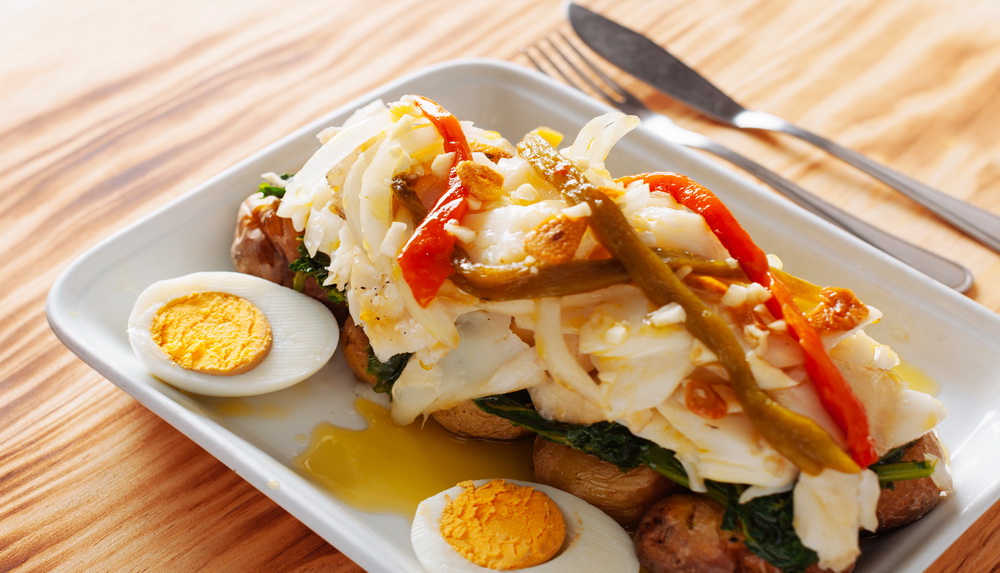
The Centro de Portugal, with all its diversity of attractions, spreading from the exhilarating, surf washed Atlantic coast in the west to the dizzy heights of the Serra da Estrela mountains in the east may be the country’s best kept secret. So, too, perhaps, might be its surprisingly rich, varied gastronomy.
Great emphasis is placed on tradition and freshness and quality of the ingredients, but here the regionality within a region is an outstanding feature – you may well find dishes that you have never eaten elsewhere! Where else can you come across a whole village specialising in roast suckling pig or with more than a thousand recipes for cooking salt cod?
Naturally, the freshest fish and seafood are to be found on the coast with superb soups and casseroles “caldeiradas” and sumptuous rice recipes like “arroz de marisco”. Aveiro with its canals, is famed for its eel dishes and also for its oysters and seaweed. Nazare, a bit further south, serves “Carapau” – fresh mackerel, dried on the beach, and then seared in olive oil and garlic. Salt cod has its place of honour in Ilvaho, just south of Aveiro, where the Maritime Museum will give you a fascinating insight into the history of Portugal’s signature culinary product.
Go inland from Coimbra a little and you will feast on the best roast suckling pig ever in the Bairrada region and “Chafana” – goat or lamb casseroled in red wine. For veal – “Vitelo de Lafoes”, Viseu is the place and for haggis like pork dishes, “Bucho”, the Castelo Branco area features this on their menus.
In the dramatic, mountainous, Serra da Estrela, roasted kid and grilled trout are the local specialities as well as the numerous varieties of cured sausage, not to mention the famous, gooey cheese, made since the 16th century with sheep’s milk, cardoon thistles and salt. A visit to a local market will be an eye opener to all the different variations!
The sweet tooth, as in the rest of Portugal, is certainly not forgotten either. Aveiro has its “ovos moles” – literally, soft eggs, Ovar its “pao de lo” – a kind of sponge cake and Viseu its “castanhas de ovos”- egg chestnuts. Delectable, flaky, convent pastries from Tentugal , Vouzela and Santa Clara are well worth looking out for.
Regional products abound including the olive oil from the Beira Baixa, honey from the various Serras and in the spring, cherries from the Cova da Beira area. In the whole region, coastal and inland, there are countless family run restaurants, some still with their kitchen “on view”, so you can enjoy not only what is on your plate, but also the preparation of it, from freshly grilled fish to heart-warming soups. Mostly at these establishments “prato do dia” (dish of the day) or “menu turistica ementa” (menu of the day) will be offered at lunchtime when dining rooms fill with workers and local businessmen alike. They certainly do not skimp on quantity here, but it is perfectly acceptable to order a half portion “meia dose” or share a whole portion “uma dose” between two.
And what is good food without good wine? Here in Centro de Portugal, you have the third most important wine growing region after the Douro and the Alentejo – Dao, named after the river. Dao red wines are often referred to as Portuguese “burgundy” – full bodied, smooth and fruity. In a region of high altitude surrounded by higher mountains , protected from the cold winds of the Atlantic, with a sandy granite soil, it has the ideal climatic conditions. Although the reds have their fame, the whites, some reminiscent of a Chardonnay, are gradually catching on. Visits to the very special bodegas near Viseu, Paco dos Cunhas de Santar and Quinta de Saes should be on your agenda.
For a pre-prandial drink or an after dinner liqueur, don’t leave the region without trying “ginjinha” – a sour cherry liqueur, very popular in Obidos, but available almost anywhere.
Frequently Asked Questions about Things to See and Do in Centro de Portugal
How to get to Centro de Portugal?
Fly directly to Lisboa / Lisbon and hire a car – the best options are:
From London Gatwick: Easyjet or TAP Portugal
From London Stansted: Ryanair
From London Heathrow: British Airways or TAP Portugal
From Luton: Easyjet
From Edinburgh: Easyjet or Ryanair
From Manchester: Ryanair, Easyjet or TAP Portugal
From Bristol: Easyjet
From Dublin: Ryanair, TAP or Aer Lingus
Or fly directly to Porto / Oporto and hire a car – the best options are:
From London Gatwick: TAP Portugal or Easyjet
From London Stansted: Ryanair
From Liverpool: Ryanair
From Manchester: Easyjet, TAP or Ryanair
From Birmingham: Ryanair
From Luton: Easyjet
From Bristol: Easyjet
From Dublin: Ryanair and TAP
Alternative airports
Faro in the Algarve region is a good entry point for tours combining Centro de Portugal with the Alentejo Region.
Santiago de Compostela in Spain is a good entry point for tours including Northern Portugal.
PLEASE NOTE some flights are seasonal.
NB: Flights are not included
When to go to Centro de Portugal?
A visit to the Centro de Portugal is best enjoyed in the Spring or the Autumn; it gets progressively warmer as you head south but Atlantic breezes refresh the coastal lands and the high mountains of the Serra da Estrela are always a little cooler.
The Planalto is very hot and dry in high summer and sharply cold in winter but enjoys a delightful climate away from those extremes. Like the north March through October is the best time to visit.
At the height of summer temperatures can often reach the low 30s Centigrade – so best avoided if you don´t like the heat ( with air-conditioning and a siesta it can be made possible, and it is all at its quietest).
How long to stay in Centro de Portugal?
Due to Centro de Portugal´s wide extension, we have created a 14-night tour covering the main highlights but, all our tours are flexible and can be adjusted to meet your needs.
We normally recommend at least two nights in each location when taken as part of a Portugal Touring Holiday though, if you have more time, there’s no end of things to see and do in Centro de Portugal.
We offer accommodation in/near Coimbra, Aveiro, Serra da Estrela, Belmonte, Castelo Rodrigo in the Planalto and Batallha, one of the Monastery Towns, to mention just a few.
What to eat in Centro de Portugal?
The simple things – done well
With cheese and lamb from the mountains and wonderful salt-cod from the ocean, a myriad of tiny vineyards and olive groves hiding among the granite boulders, and a benign climate to boot, the Centro region is blessed with all the ingredients for a wonderful gastronomy – more details in the Eat and Drink section. The gastronomic tradition here is one of deceptive simplicity, where the ingredient is always the star – we’re sure you’ll approve!
What to buy in Centro de Portugal?
As mentioned above, Centro de Portugal covers a wide extension full of contrasts, endowing it with a special charm to those looking for an authentic journey around one of Portugal´s best-kept secret. Diverse not only geographically but culturally, in this land you will find all kinds of typical souvenirs. From small family-run businesses to long-established markets, there is a lot to choose from!
If you can carry liquids, wines from the Dao region or the aperitif “ginjinha” liqueor, very popular in Obidos, are worth looking out for. For a gastronomic souvenir, Aveiro´s ovos moles as well as cured sausage and gooey cheese from Serra da Estrela are certainly a good treat for the foodies.
Cork-based products and the artistically desgined sardines cans, though widely spread across the country, are also a safe bet.
If you are looking for something a bit more luxurious, don´t miss the opportunity to visit Vista Alegre Ceramic Factory in Ilhavo, just 15mins from Aveiro. It´s well worth a visit.


